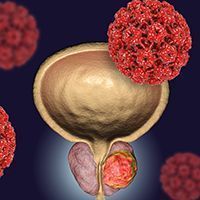Commentary
Video
Supplements and Featured Publications
Dr Doonan on Treatment Strategies Following Progression on ICIs in Advanced Melanoma
Author(s):
Bently P. Doonan, MD, discusses treatment strategies for patients with advanced melanoma who have progressed on checkpoint inhibitors.
"[Treatment following immune checkpoint inhibition (ICI)] continues to be an unmet need within the disease. We're fortunate that with up-front ICI in patients who are candidates for it, we effectively will only give that therapy to approximately 50% of patients or more…However, this also tells us that 30% to 40% or more of patients will [need subsequent treatment]."
Bently P. Doonan, MD, clinical assistant professor, Division of Hematology & Oncology, Department of Medicine, College of Medicine, the University of Florida, discusses current strategies for and associated challenges with the treatment of patients with advanced melanoma following disease progression on immune checkpoint inhibitors (ICIs).
Treatment options following checkpoint inhibition remain a significant unmet need in melanoma, Doonan begins. Although up-front checkpoint inhibition provides substantial benefits, only approximately 50% to 60% of eligible patients receive durable responses, leaving 30% to 40% of patients requiring subsequent therapy, he reports. Addressing these gaps—particularly for those lacking second-line options—is critical, Doonan emphasizes.
For patients with BRAF-mutated melanoma, molecularly targeted therapies such as the BRAF inhibitors such as vemurafenib (Zelboraf) and dabrafenib (Tafinlar), and the MEK inhibitors trametinib (Mekinist) and cobimetinib (Cotellic), remain a standard second-line option, Doonan continues. However, these mutations are present in only 40% to 50% of patients with advanced melanoma, leaving a substantial number of patients without clear alternatives. For those previously treated with ICI, options may include immune checkpoint rechallenge or escalation to dual-agent therapy, particularly in cases of recurrence after a robust initial response or stable remission, Doonan details. However, patients who develop resistance or do not respond to ICI require other strategies, he says.
One significant advancement is the FDA approval of lifileucel (Amtagvi), a tumor-infiltrating lymphocyte (TIL) therapy, Doonan states. This cellular therapy is approved as a third-line treatment for patients with BRAF mutations and as a second-line option for the broader melanoma population.
However, for patients who are ineligible for TIL therapy or unable to access it, clinical trials and novel combination therapies are critical alternatives, he notes. For example, pembrolizumab (Keytruda) combined with lenvatinib (Lenvima) has shown promise in some cases, as has targeting less common molecular alterations, such as NRAS or NF1mutations by using drugs adapted from other cancer types, Doonan reports. Beyond these strategies, treatment options remain limited, underscoring the urgent need for continued research and therapeutic innovation in this space, Doonan concludes.










